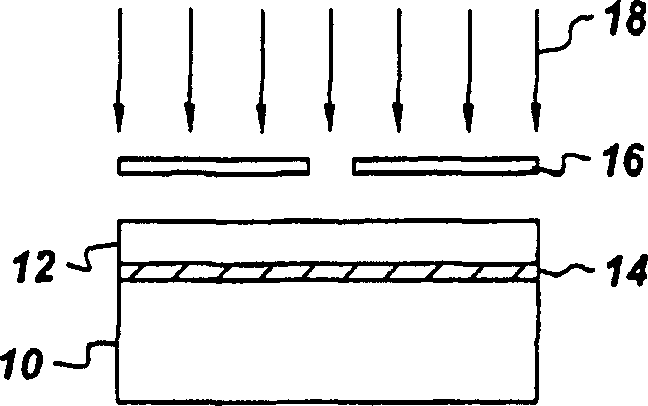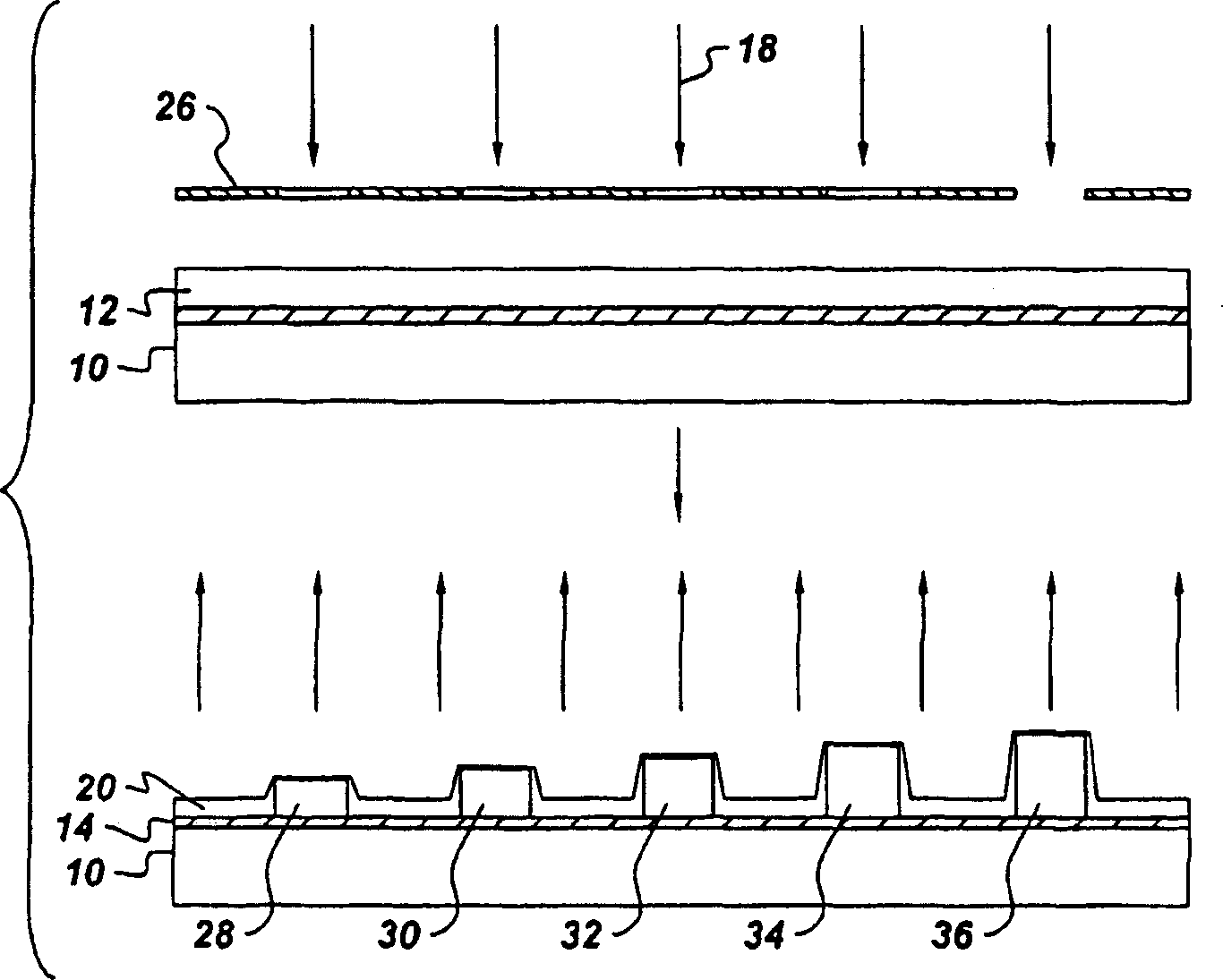Polymeric optical device structures having controlled topographic and refractive index profiles
A technology of optical devices and refractive index, applied in optical components, optics, instruments, etc., can solve problems such as roughness
- Summary
- Abstract
- Description
- Claims
- Application Information
AI Technical Summary
Problems solved by technology
Method used
Image
Examples
Embodiment 1
[0050] This example describes the use of UV radiation to prepare TM Surface topography of polymer composites of 9371 polycarbonate (available from Bayer Company) and CY 179.
[0051] Preparation contains about 50 parts by weight of Apec TM A mixture of polycarbonate, about 50 parts by weight of CY 179, 1 part by weight of Cyracure UVI-6976 photocatalyst, 150 parts by weight of anisole and 50 parts by weight of cyclopentanone. A 50 micron thick film was prepared on a glass substrate by spin coating the material and partially curing it at 90°C for 20 minutes to remove the solvent. Image exposure using chrome patterned on a quartz plate and patterned on a polycarbonate / epoxy film. Exposure was performed for 30 seconds using a Karl Suss contact printer. After exposure, the samples were baked on a hot plate at 200°C for 1 hour. Surface profile measurements of the resulting surface topography showed a step of approximately 23 microns between the underlying unexposed film surfac...
PUM
| Property | Measurement | Unit |
|---|---|---|
| size | aaaaa | aaaaa |
| size | aaaaa | aaaaa |
| size | aaaaa | aaaaa |
Abstract
Description
Claims
Application Information
 Login to View More
Login to View More - R&D
- Intellectual Property
- Life Sciences
- Materials
- Tech Scout
- Unparalleled Data Quality
- Higher Quality Content
- 60% Fewer Hallucinations
Browse by: Latest US Patents, China's latest patents, Technical Efficacy Thesaurus, Application Domain, Technology Topic, Popular Technical Reports.
© 2025 PatSnap. All rights reserved.Legal|Privacy policy|Modern Slavery Act Transparency Statement|Sitemap|About US| Contact US: help@patsnap.com



